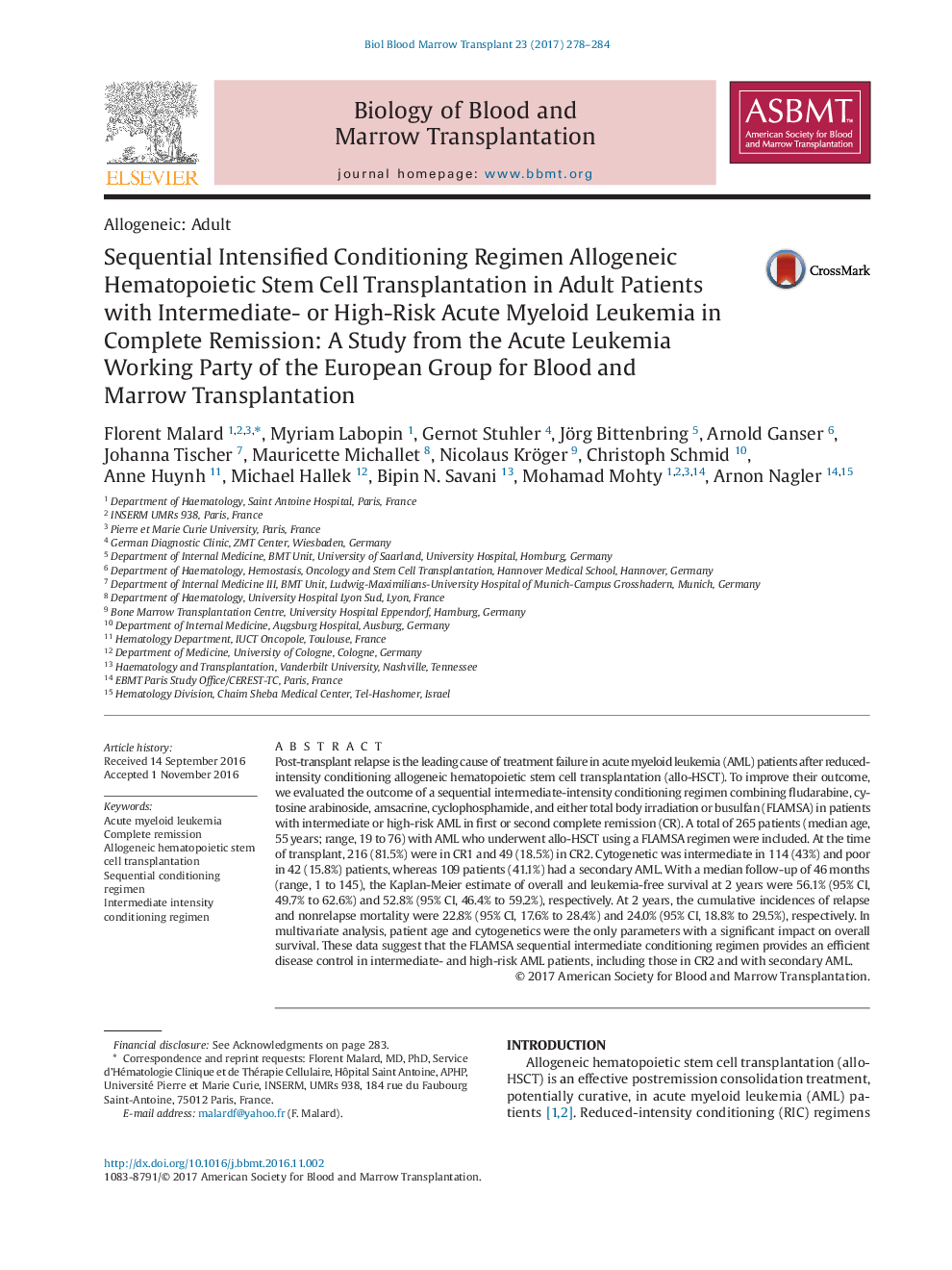| کد مقاله | کد نشریه | سال انتشار | مقاله انگلیسی | نسخه تمام متن |
|---|---|---|---|---|
| 5524247 | 1546245 | 2017 | 7 صفحه PDF | دانلود رایگان |

- FLAMSA provides an efficient disease control in intermediate- and high-risk AML.
- Rate of leukemia-free survival at 2 years was 52.8% (95% CI, 46.4% to 59.2%).
- Rate of overall survival at 2 years was 56.1% (95% CI, 49.7% to 62.6%).
Post-transplant relapse is the leading cause of treatment failure in acute myeloid leukemia (AML) patients after reduced-intensity conditioning allogeneic hematopoietic stem cell transplantation (allo-HSCT). To improve their outcome, we evaluated the outcome of a sequential intermediate-intensity conditioning regimen combining fludarabine, cytosine arabinoside, amsacrine, cyclophosphamide, and either total body irradiation or busulfan (FLAMSA) in patients with intermediate or high-risk AML in first or second complete remission (CR). A total of 265 patients (median age, 55 years; range, 19 to 76) with AML who underwent allo-HSCT using a FLAMSA regimen were included. At the time of transplant, 216 (81.5%) were in CR1 and 49 (18.5%) in CR2. Cytogenetic was intermediate in 114 (43%) and poor in 42 (15.8%) patients, whereas 109 patients (41.1%) had a secondary AML. With a median follow-up of 46 months (range, 1 to 145), the Kaplan-Meier estimate of overall and leukemia-free survival at 2 years were 56.1% (95% CI, 49.7% to 62.6%) and 52.8% (95% CI, 46.4% to 59.2%), respectively. At 2 years, the cumulative incidences of relapse and nonrelapse mortality were 22.8% (95% CI, 17.6% to 28.4%) and 24.0% (95% CI, 18.8% to 29.5%), respectively. In multivariate analysis, patient age and cytogenetics were the only parameters with a significant impact on overall survival. These data suggest that the FLAMSA sequential intermediate conditioning regimen provides an efficient disease control in intermediate- and high-risk AML patients, including those in CR2 and with secondary AML.
Journal: Biology of Blood and Marrow Transplantation - Volume 23, Issue 2, February 2017, Pages 278-284